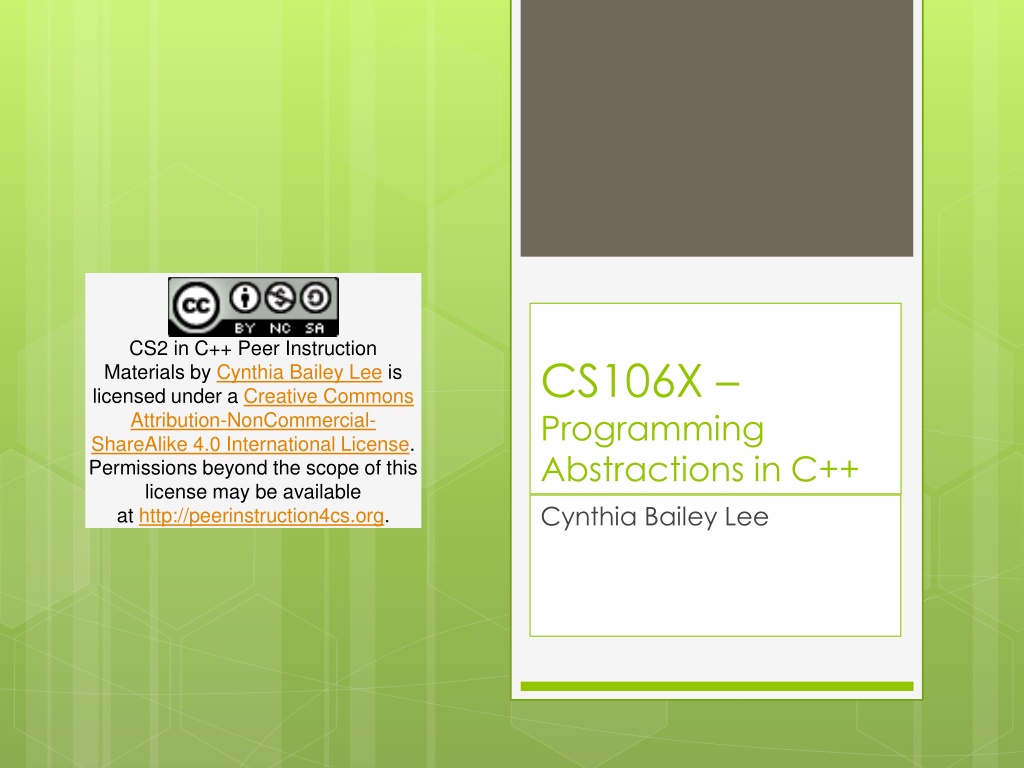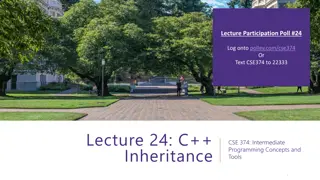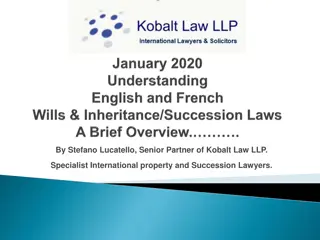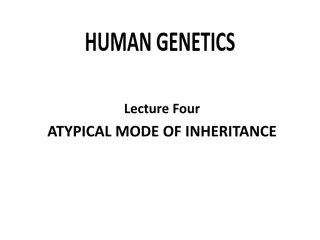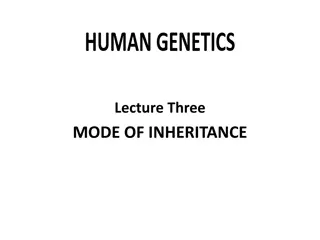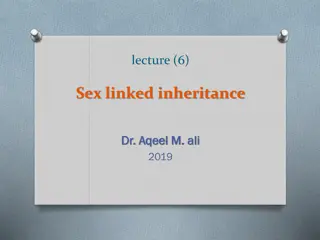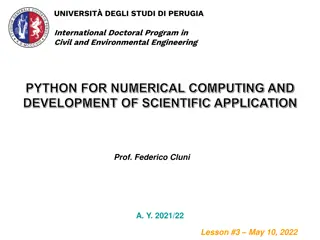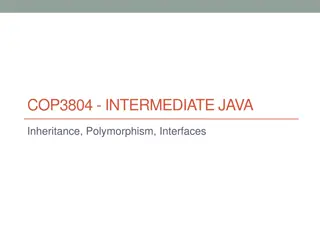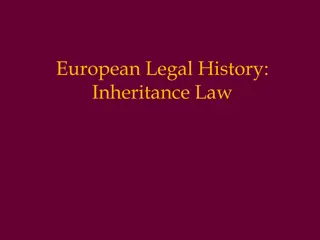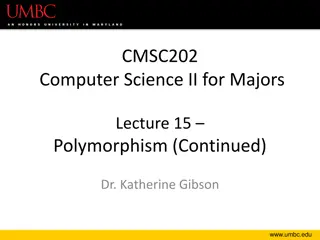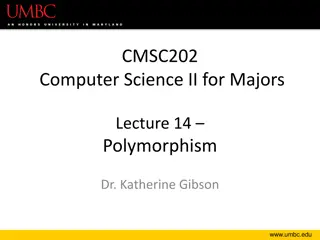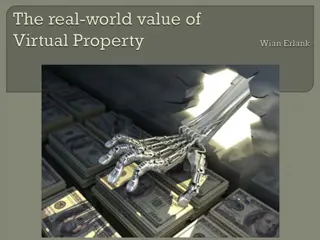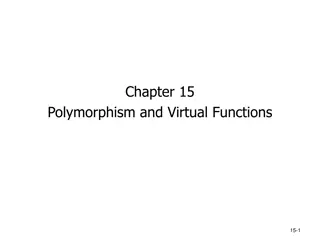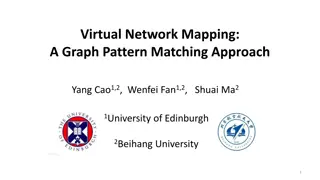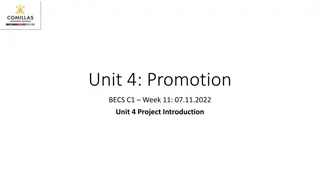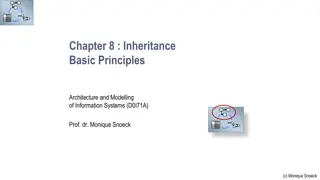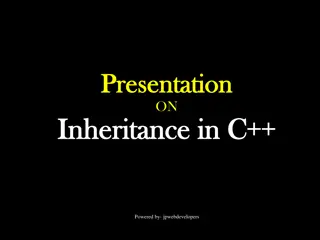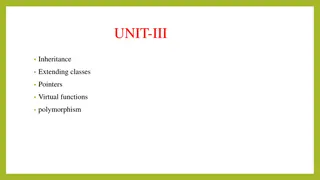C++ Virtual Keyword and Inheritance Rules Explained
Understand the rules and behavior of virtual functions in C++ inheritance, including pure virtual functions, abstract classes, and runtime method calls. Dive into examples with Mammal, Cat, and Siamese classes to grasp how method implementations are resolved. Explore the nuances of virtual keyword usage for effective C++ programming practices.
Uploaded on Sep 29, 2024 | 0 Views
Download Presentation

Please find below an Image/Link to download the presentation.
The content on the website is provided AS IS for your information and personal use only. It may not be sold, licensed, or shared on other websites without obtaining consent from the author. Download presentation by click this link. If you encounter any issues during the download, it is possible that the publisher has removed the file from their server.
E N D
Presentation Transcript
Creative Commons License CS2 in C++ Peer Instruction Materials by Cynthia Bailey Lee is licensed under a Creative Commons Attribution-NonCommercial- ShareAlike 4.0 International License. Permissions beyond the scope of this license may be available at http://peerinstruction4cs.org. CS106X Programming Abstractions in C++ Cynthia Bailey Lee
2 Today s Topics Inheritance and the virtual keyword Rules for pure virtual and abstract classes Rules for virtual functions during runtime What this means for the Stanford 1-2-3 Expression class What this means for destructors
Rules for virtual: pure virtual If a method of a class looks like this: virtual returntype method() = 0; then this method is a called pure virtual function and the class is called an abstract class Abstract classes are like Java interfaces You cannot do = new Foo(); if Foo is abstract (just like Java interfaces) ALSO, you cannot do = new DerivedFoo(); if DerivedFoo extends Foo and DerivedFoo does not implement all the pure virtual methods of Foo
Rules for virtual: runtime calls BaseType * obj = new DerivedType(); If we call a method like this: obj->method(), two different things could happen: If method is not virtual, then BaseType s implementation of method is called If method is virtual, then DerivedType s implementation of method is called DerivedType * obj = new DerivedType(); If we call a method like this: obj->method(), only one thing could happen: DerivedType s implementation of method is called 1. 2. 1.
class Mammal { public: virtual void makeSound() = 0; string toString() { return Mammal ; } }; class Cat : public Mammal { public: virtual void makeSound() { cout << rawr << endl; } string toString() { return Cat ; } }; class Siamese : public Cat { public: virtual void makeSound() { cout << meow << endl; } string toString() { return Siamese ; } }; (A) Mammal (B) Cat (C) Siamese (D)Gives an error (E)Other/none/more What is printed? Siamese * s = new Siamese; cout << s->toString();
class Mammal { public: virtual void makeSound() = 0; string toString() { return Mammal ; } }; class Cat : public Mammal { public: virtual void makeSound() { cout << rawr << endl; } string toString() { return Cat ; } }; class Siamese : public Cat { public: virtual void makeSound() { cout << meow << endl; } string toString() { return Siamese ; } }; (A) Mammal (B) Cat (C) Siamese (D)Gives an error (E)Other/none/more What is printed? Cat * c = new Siamese; cout << c->toString();
class Mammal { public: virtual void makeSound() = 0; string toString() { return Mammal ; } }; class Cat : public Mammal { public: virtual void makeSound() { cout << rawr << endl; } string toString() { return Cat ; } }; class Siamese : public Cat { public: virtual void makeSound() { cout << meow << endl; } string toString() { return Siamese ; } }; (A) rawr (B) meow (C) Siamese (D)Gives an error (E)Other/none/more What is printed? Cat * c = new Siamese; c->makeSound();
How does this relate to Stanford 1-2-3? This diagram shows a CompoundExp object as the root of a tree, and the children are the LHS and RHS (private member variables of type Expressio*). LHS points to an object of type DoubleExp, with value 3.7. RHS points to an object of type IdentifierExp with name foo . Note that it is ok for the RHS and LHS pointers to point to DoubleExp and IdentifierExp objects, because these are derived classes of the base class Expression. eval() must be virtual, or we wouldn t call the eval() implementations specific to the derived classes like DoubleExp and IdentifierExp
Which best explains good design of destructors in polymorphic classes? A. Destructors are specific to each class, so we don t need to apply virtual to them B. Destructors should be virtual or we will cause a memory leak in cases like this: DerivedType * obj = new DerivedType(); delete obj; C. Destructors should be virtual or we will cause a memory leak in cases like this: BaseType * obj = new DerivedType(); delete obj; D. Both B and C E. Other/none
Polymorphism in the Stanford C++ Library Graphics Live coding example
